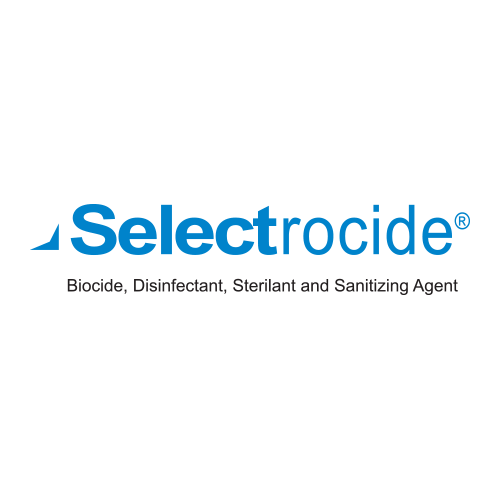Selectrocide is an easy-to-use, safe, chlorine dioxide-generating product for use in agricultural, turfgrass, and horticultural applications. Stabilized chlorine dioxide (ClO2), the product formed when Selectrocide is added to water, offers unparalleled performance as bactericides, virucides, fungicides, algaecides, sporicides, disinfectants, sterilants and sanitizing agents.
Selectrocide is registered with the Environmental Protection Agency (EPA) as a pesticide and falls within the lowest toxicity categories. It is also Organic Materials Review Institute (OMRI) listed for use in certified organic production or food processing and handling.
Selectrocide – Biocide, Disinfectant, Sterilant and Sanitizing Agent
Description
Uniquely Different and Superior Chemistry
Selectrocide is uniquely different from most chorine products you may have used or have considered for use in your operation. First of all, the only thing chlorine dioxide has in common with chlorine is the word, “chlorine.” That is where the similarity ends.
Chlorine dioxide works through oxidation. It only reacts with substances that give off an electron. Chlorine products, on the other hand, work through substitution reactions, substituting a chlorine atom from the substance it reacts with. This creates significant differences in control profiles and overall efficacy.
Unlike other oxidants, chlorine dioxide does not react (or is extremely slow in reacting) with most organic compounds. Chlorine dioxide is highly selective and directs its oxidative activity primarily to a very few vital amino acids and RNA in the cell. Its main mode of action is the disruption of cell metabolism. Selectrocide does kill viruses in a different manner by the prevention of protein formation. Its selectivity and unique specific and narrow target sites of activity contribute to both its superior efficacy but also results in a very rapid kill time. It is important to note that no microorganism or spore has proved resistant to Selectrocide activity.
Unlike Selectrocide’s ClO2, peroxide (H2O2) and chlorine products such as hypochlorous acid (HOCL) and sodium hypochlorite (NaOCL) react rapidly with a wide spectrum of other amino acid residues, peptide bonds and other compounds such as carbohydrates, lipids, nucleobases and amines. This large and random site selection process translates to a less efficient (must use more product) and higher costs for the user.
Uses
Agriculture, turf and horticulture operations are under increasing pressure to improve over disease management associated with water supplies and irrigation systems, soil-borne plant diseases and surface presence of bacteria, viruses, fungi, algae, mold, biofilm and spores.
Examples of Selectrocide when used as directed:
- Disinfects and sanitizes non-porous hard surfaces, pots flats, cutting tools and mowers
- Removes or inhibits re-establishment of slime in irrigation/transfer lines and systems
- Treats, controls and prevents build-ups of soil-borne plant diseases and other algae, fungi, molds and attendant slimes
- Highly effective when used to treat biofilms

